It's easier than you think to make fresh, vegan pasta at home without needing resort to egg-replacers and other unusual ingredients. Read on to find out more!
Does pasta dough have to be made with egg?
If you've ever bought fresh pasta from the store, you'll have noticed it almost always includes egg. But, if you look at the ingredients list of dried pasta it's just durum wheat and water. What's going on? Does pasta dough have to be made with egg? I'm here to tell you that no, it does not! Which means, it's incredibly easy to make vegan pasta at home.
Dried pasta versus fresh pasta
It is probably fair to say that fresh pasta and dried pasta are suited to different things. Fresh pasta is usually made by mixing egg and flour into a stiff but pliable dough and kneading, resting then rolling it until its thin enough to make ribbons of pasta (e.g. tagliatelle) or sheets that can be used for lasagne, ravioli or tortellini. Dried pasta on the other hand is made by mixing semolina and water. It is then shaped before being dried out so that it can be stored for long periods of time. Because of the shaping and drying process, dried pasta is normally more firm and requires a longer cooking time.
But, what happens if you take that semolina and water dough and roll it as thin as you would with fresh pasta, then cook it before it's had a chance to dry out? Believe it or not, it's just as delicate and tender as fresh pasta made with egg meaning you can use it in the exact same way that you would any other fresh pasta dough. The main differences are that it doesn't have that rich eggy flavour and it is much paler in colour.
Pasta making equipment
Pasta has been made in kitchens across Italy for hundreds of years so, hopefully you won't be surprised to hear that all you will need are:
- Weighing scales
- A mixing bowl
- A rolling pin (an adjustable rolling pin like this one from Joseph & Joseph is great for working down the thickness and ensuring its even).
Although making pasta with just a rolling pin is more labour intensive, I love it. You feel like you've had a good work out after and you learn to recognise when the pasta is the right consistency much quicker if you are handling it rather than running it through a machine.
If, however, you would rather use a machine then that's absolutely fine and I will cover both methods. There are two types of pasta machine:
- A hand cranked pasta machine that clips to your work surface; or
- A pasta rolling attachment that fixes to your stand mixer and uses the motor to power the rollers.
I've linked to the pasta machine I used to use which is fantastic for beginners. If you have a stand mixer then you will need to research which is the right attachment for you.
You may also find these extra tools useful depending on the types and shapes of pasta you want to make:
- Pasta cutter (I like to use one with a straight wheel and a wavy wheel)
- Round ravioli cutter (in my opinion the square ones are a waste of money, especially if you have a pasta cutter)
- Gnocchi board (great for getting ridges in your pasta)
Italian '00' flour versus coarse semolina
As you know, we need just two ingredients to make my basic plant based pasta - semolina and water. But what is semolina and why do we use it rather than Italian '00' pasta flour?
Italian '00' flour is a very fine flour made from Durum Wheat. The '00' rating refers to how fine the flour has been milled. For comparison, '0' flour is more similar to fine semolina and '000' flour is the texture of cornstarch. We use it for pasta making as it creates a silky smooth dough.
The reason we use semolina instead of '00' flour in this recipe is because semolina is high in gluten and it helps to bring the dough together and create a more stable final product. Normally the egg would help with this but as we are just using water to bind it's important we use semolina and not '00' flour. If you want to experiment with using a mix of semolina and '00' flour then please do! I wouldn't recommend using more than 50% '00' flour as it will get hard and harder to work with.
I also like using semolina because it creates a slightly coarser texture on the outside of the pasta which is great for encouraging sauce to cling to it.
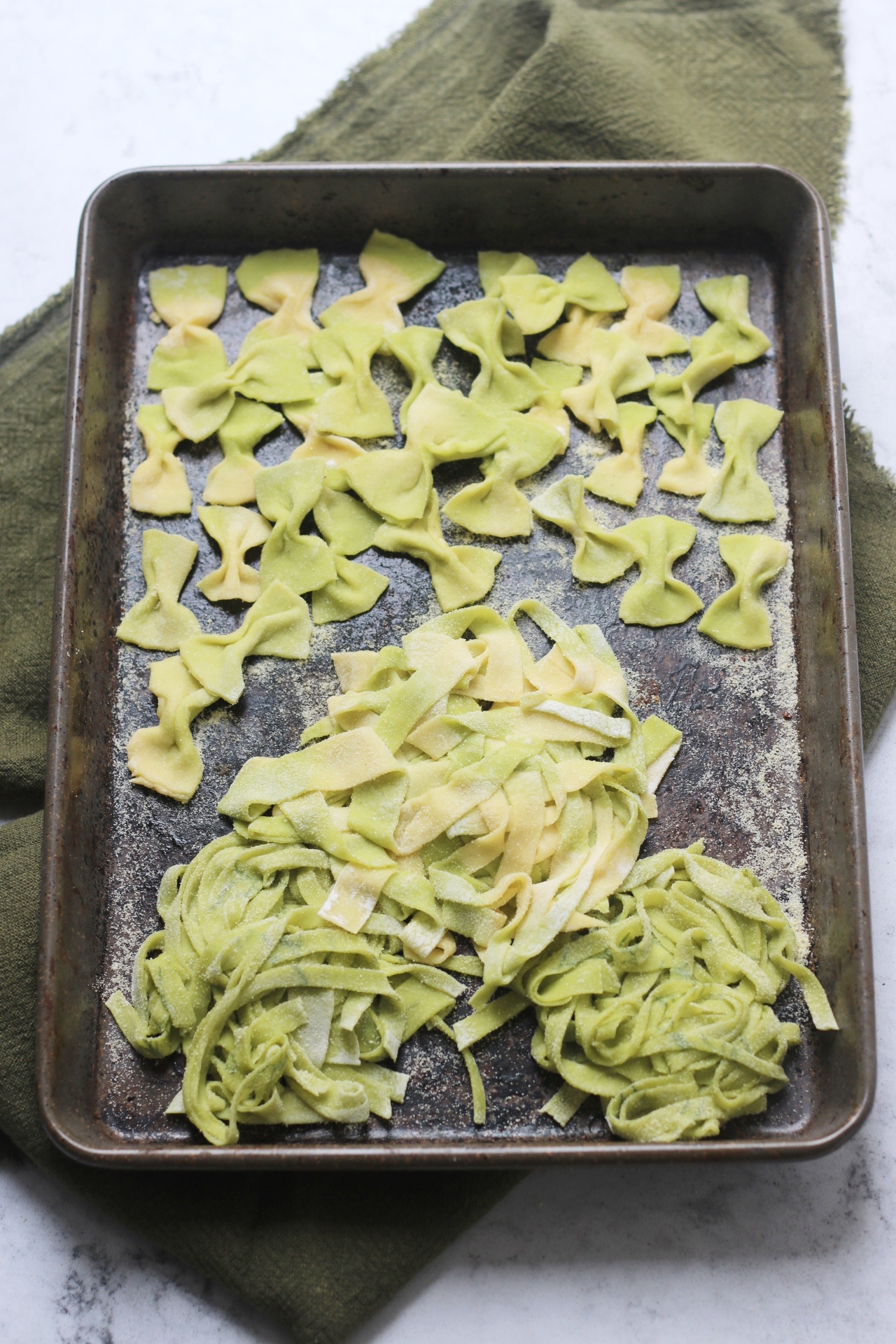
Making vegan pasta dough: using a mixer versus kneading by hand
The first step of making your pasta dough is adding your semolina to a large bowl along with a little salt, forming a well in the middle then adding your water. From here you need to mix it together until you had a ball of dough. There are two methods you can use. The first is using a food processor or stand mixer and the second is kneading the dough by hand.
If you have a good food processor, then add the semolina and salt, set it running then slowly pour in the water. Let the mixer run until the semolina and water comes together to form a ball. The same principle works if you have a stand mixer with a dough hook. Let it form a ball then leave the mixer running so it "kneads" the dough.
If you don't have a mixer, or just prefer to make your pasta by hand like I do, start mixing the water, bringing in the semolina from the edge of the well a little at a time. Once it's coming together in a scraggly ball, start kneading it on a lightly floured counter top. When mixing the dough by hand, the kneading is the most time consuming part. You really want to make sure you've kneaded it well so that the ball of dough is stretchy and springy.
Whichever method you use, once you've finished kneading, cover the dough and leave it to one side to rest.
Coloured dough
To add some additional excitement (and flavour) to your vegan pasta dough, use the juice or puree of a colourful veg! For pink pasta dough whizz a pre-cooked baby beetroot with your water in a blender before adding it to the dough. For green pasta wilt a handful of spinach and blitz this in a blender along with your water before adding to the dough. Use 50% water and 50% carrot juice for an orange dough. The possibilities are endless.
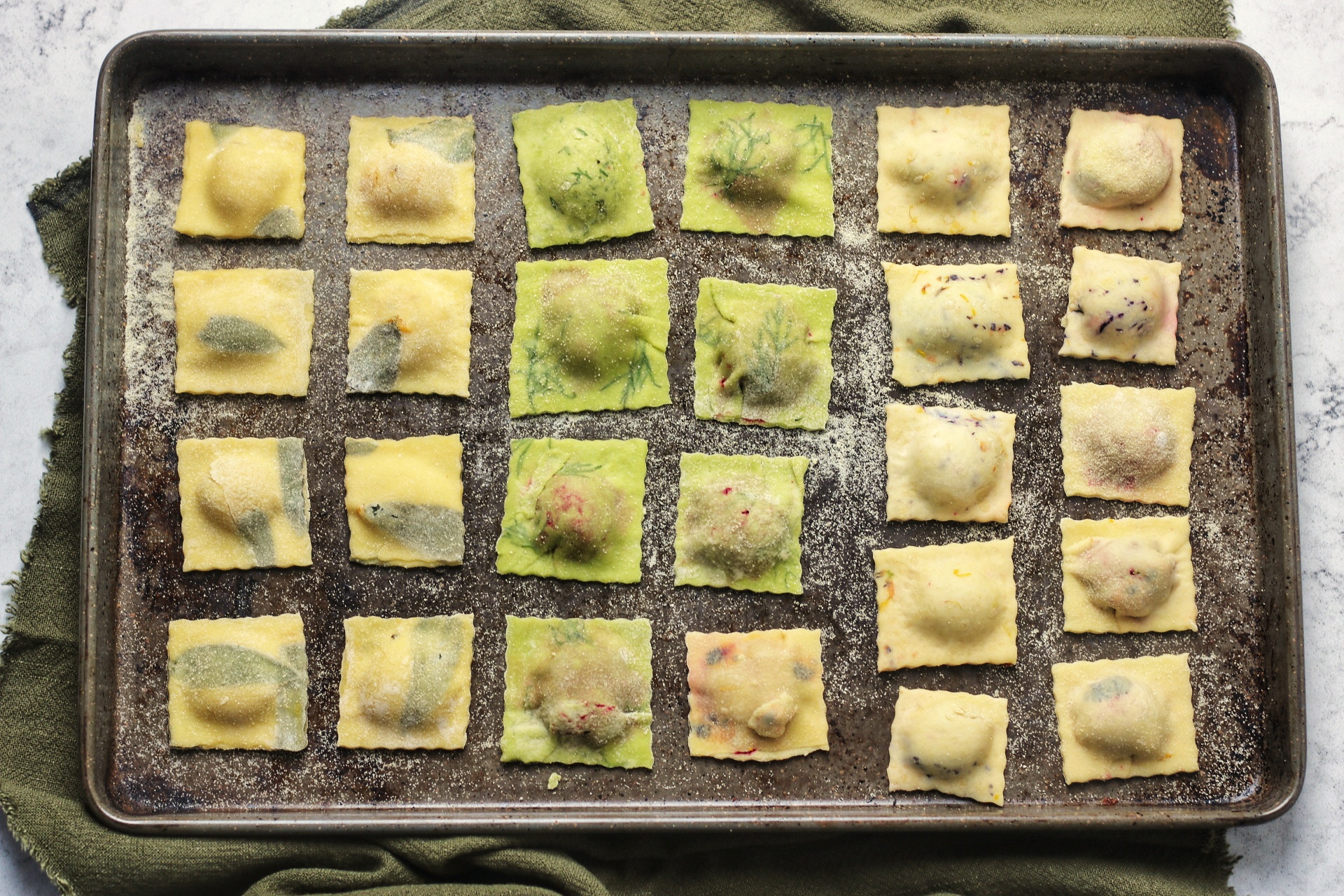
Rolling vegan pasta dough: using a pasta machine versus rolling by hand
Once your dough has been rested it is time to transform it into your preferred pasta shape. If you're making shapes like farfalle (bow ties) or orecchiette (little ears) then you don't need to roll the dough out first. But, for spaghetti, parpadelle, ravioli, tortellini, even lasagne sheets, you will need to roll it out nice and thin. Regardless of which method you use you will need to roll it out to about a quarter of an inch thick before you do anything.
For those who want to use a pasta machine you will have one of two types. It will either be a stand mixer attachment and the mixer's motor will power the roller, or it will need to be cranked by hand. Whichever you are using, adjust it to the widest setting and slowly let the flattened dough feed into the rollers. You will need to gently support the dough as it is fed through and comes out the other side. Pass it through this setting at least 3 times (until you feel no resistance) before moving on to the next size.
Moving along to the next size setting will make the space between the rollers narrower and the pasta even thinner. Keep passing the dough through the rollers at least two or three times for the first three settings. With the thinnest settings you can get away with passing the dough through just once or twice.
If rolling your pasta by hand I really recommend cutting your dough ball into at least 4 pieces. Why? Because you probably don't have a work top long enough to roll out a huge, long, thin single piece of dough! Once you've cut the dough into 4-6 balls, leave on ball out and wrap up the others to make sure they don't dry out. Next, dust your work surface in flour and simply use your rolling pin to make a long thin strip. Each time you roll it out, re-dust your work surface and flip it over. Keep rolling until you have a long sheet of pasta that is paper thin.
Adding herbs and flowers to the laminated dough
You will see in some of my photos that it looks as though herbs have been suspended in the pasta dough. I did this by rolling the pasta as thin as I could, adding the leaves to one half of the dough, folding the second half over the top and then rolling it out nice and thin again. The result is a beautiful pattern and a herb infused pasta! This method works regardless of whether you roll by hand or use a mixer.
You can also add edible flowers instead of, or as well as herbs, for a really colourful pasta!
Cutting your pasta into ribbons (optional)
If you're using a pasta machine it will have different settings to make ribbons of pasta of varying sizes. If you've rolled your pasta out by hand, you can fold the sheet up and then cut the ribbons using a sharp knife.
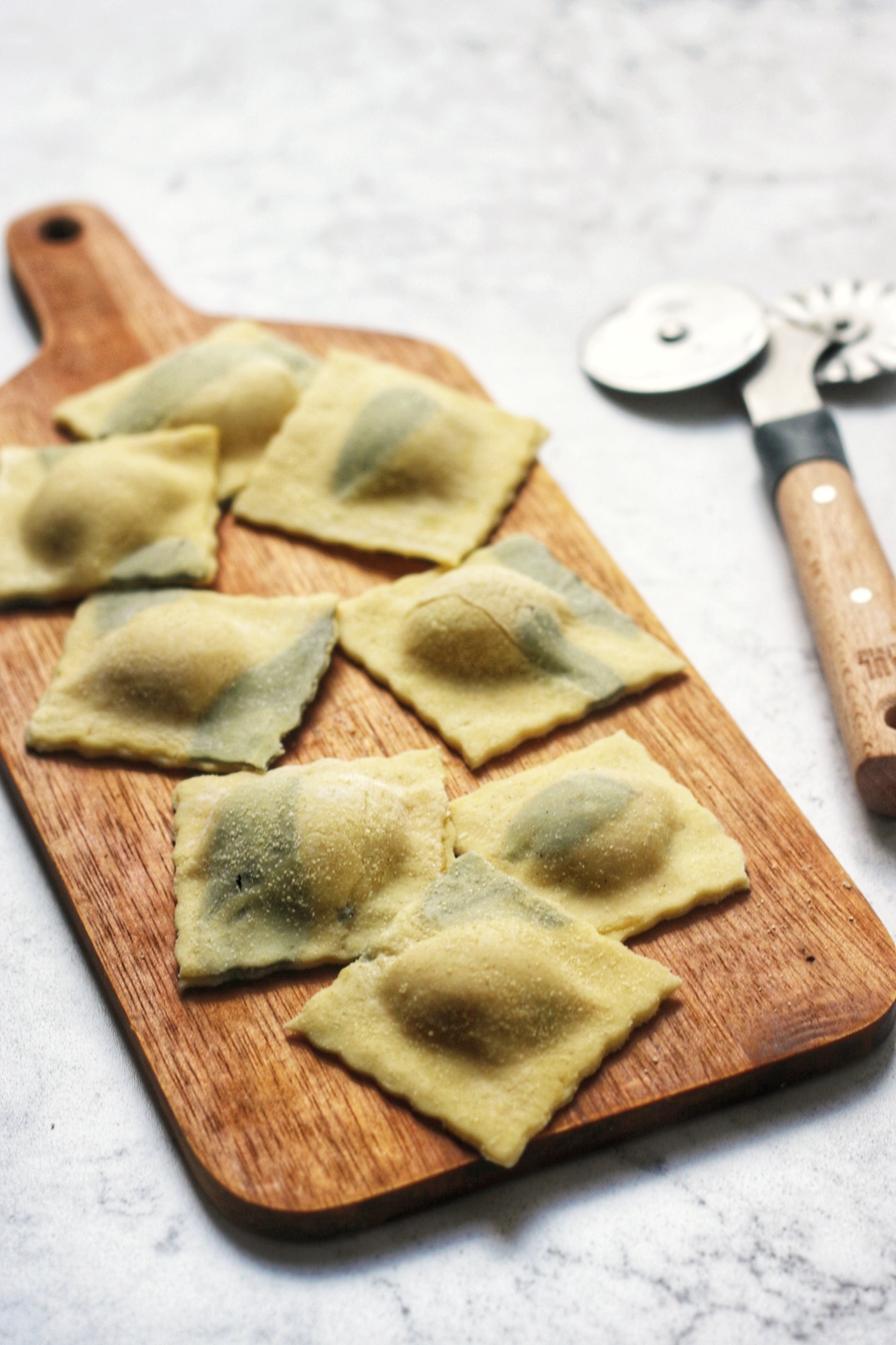
The recipe
My vegan pasta dough recipe will make enough for 4 people as a starter or 2 people as a main course.
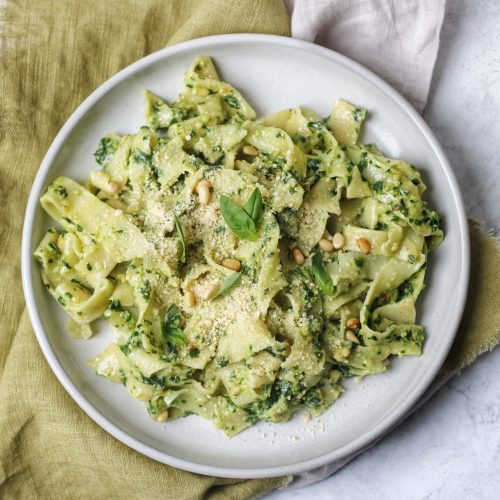
Vegan Pasta Dough
Equipment
- Rolling pin or pasta machine
Ingredients
- 250 g coarse semolina plus extra for dusting
- 1 pinch salt
- 125 g water
- Italian '00' flour for kneading and dusting
Instructions
- If using a food processor or mixer, place the semolina and salt in the bowl and start it running, add the water in a stream until you get to a tacky breadcrumb consistency (you may not need to add all the water). Keep the processor running until it forms a ball (adding just enough water if needed). If making by hand, place the semolina and salt in the bowl and make a well in the middle. Add in the water and mix together using a fork until it comes together into a rough ball of dough.
- Knead the dough for 4-5 minutes (either by hand or in your mixer), then wrap the dough in cling film and rest on your work surface for at least 30 minutes. There is no need to chill the dough.
- Dust a large tray with semolina - this is where you will place the finished pasta shapes or ribbons..
- Dust your work surface with a little Italian '00' flour.
- If shaping the dough, pinch off small pieces and shape by hand.If rolling out the dough, cut the dough in half and place the piece you are not rolling out back into the cling film.
- If using a pasta machine, roll the dough out until it is roughly a quarter of an inch thick and begin running it through the widest setting on your machine. Do this three times before moving on to the next setting. Again repeat this three times before moving on. Repeat this until you are on the thinnest setting. Using a rolling pin roll out the dough to a thin rectangular sheet. After each roll, pick up the dough, dust the work surface and flip the sough over to avoid it sticking.
- The dough is thin enough once you can see through it. At this stage it can be used for ravioli, tortellini, lasagne etc.
- Once the dough is rolled, use the teeth on your pasta machine to cut it into ribbons or, fold the bottom of the pasta sheet into the middle, and then bring the top down to meet it, fold it in half and then use a sharp knife to cut it into ribbons of the desired width.
- Place the pasta on the semolina dusted tray and dust with some more semolina while you repeat with the remaining dough.
- To cook, bring a large pan of water to the boil (for every 1 litre of water add 1 teaspoon of salt). The pasta should cook within 5 minutes (depending on the thickness).
Nutrition
Pasta dishes and sauces
Once you've made your own fresh vegan pasta, why not add it to one of these delicious pasta dishes or sauces
More Italian Inspiration
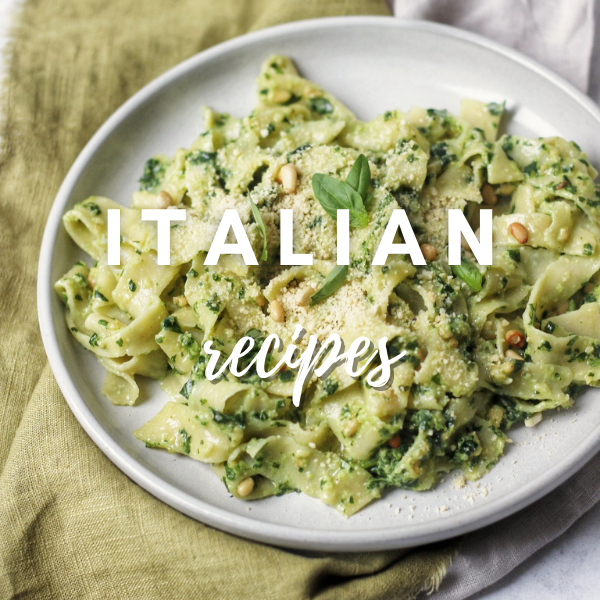
If you love Italian food as much as I do, check out some of my favourite recipes inspired by Italy.

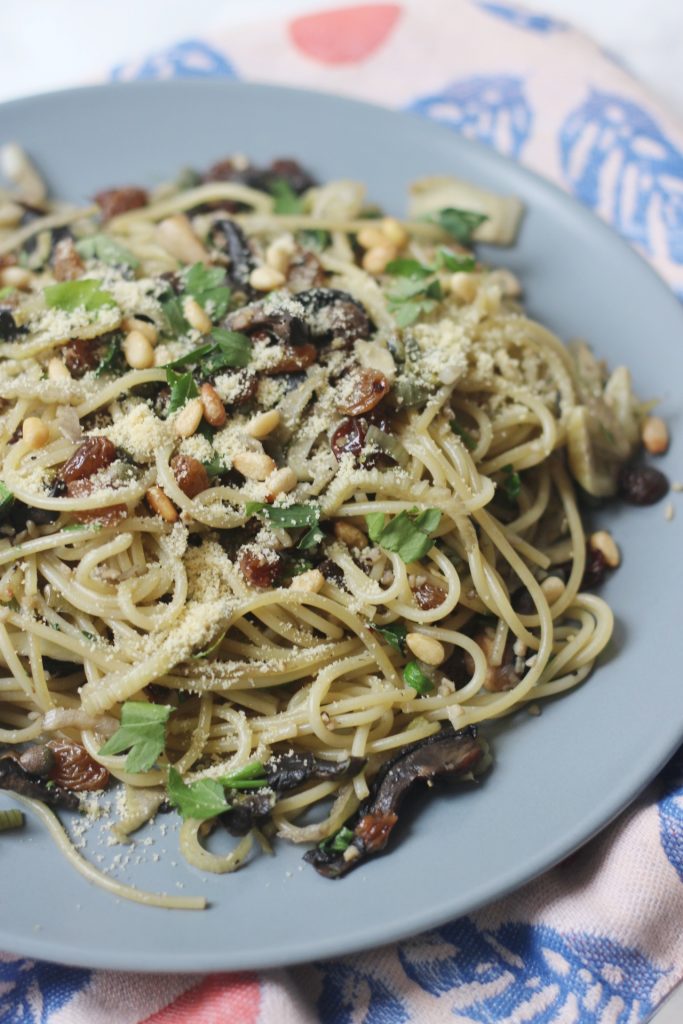
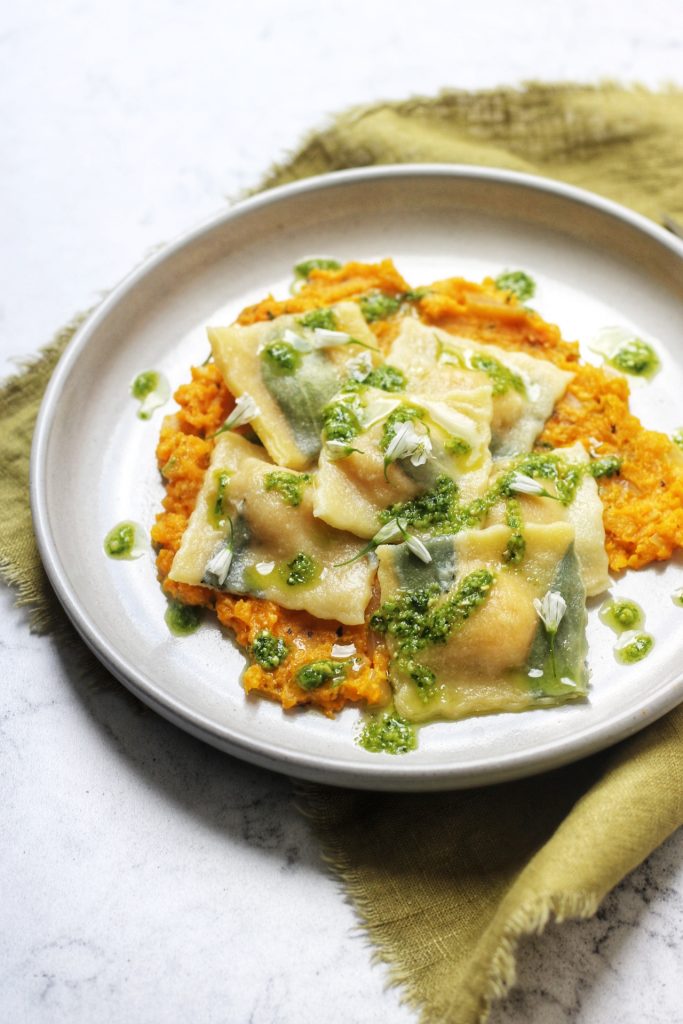
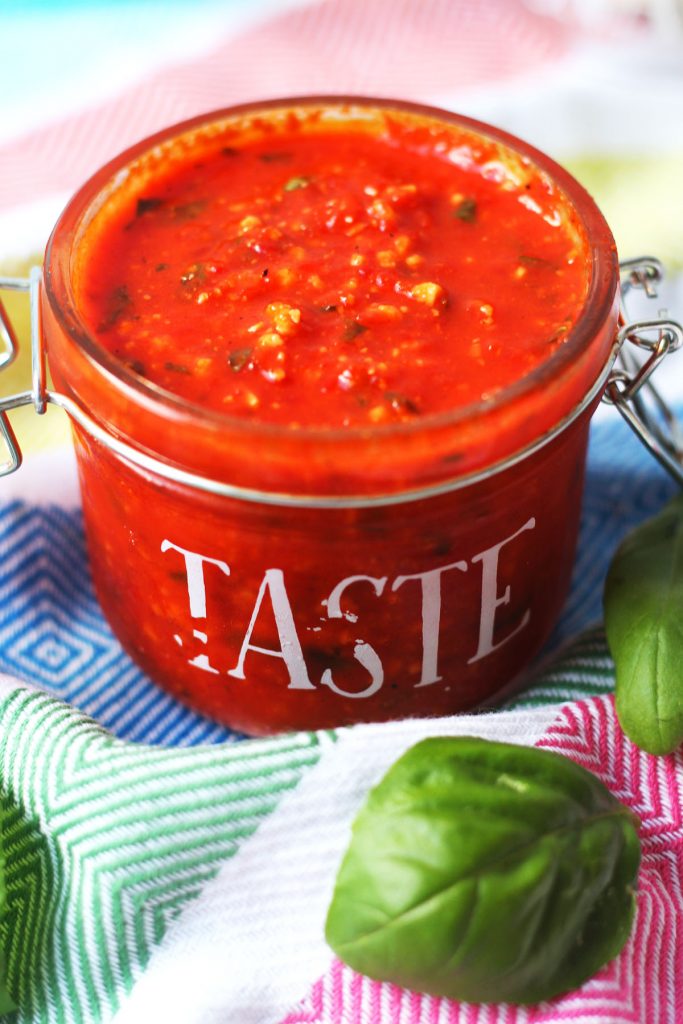
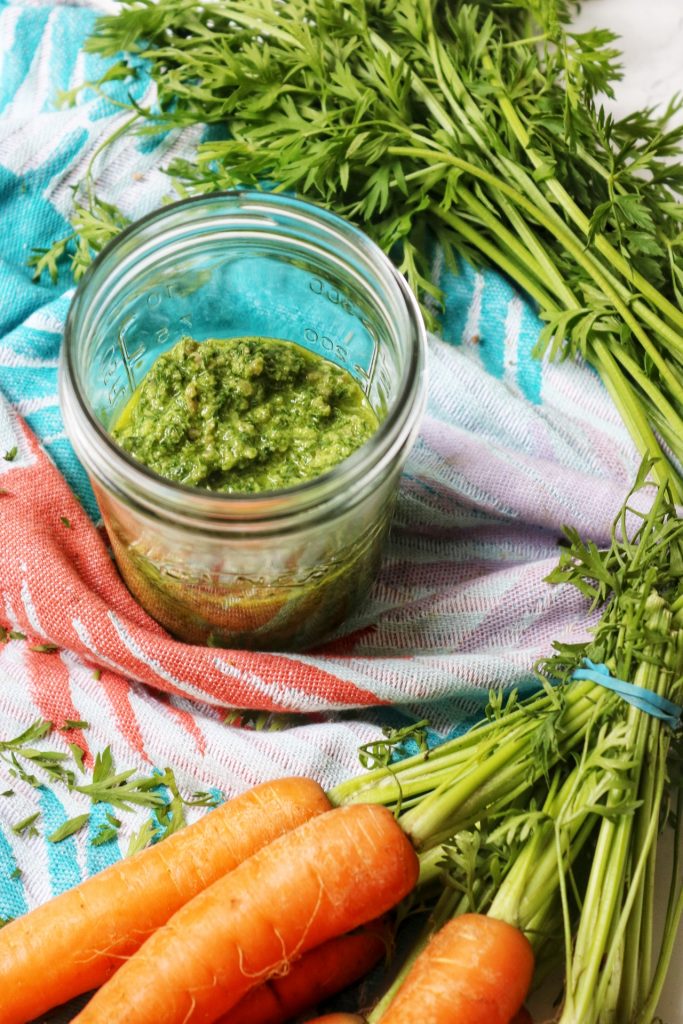
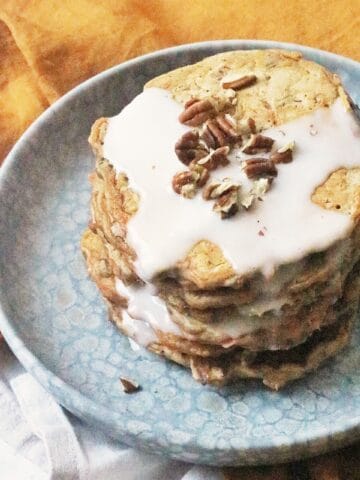
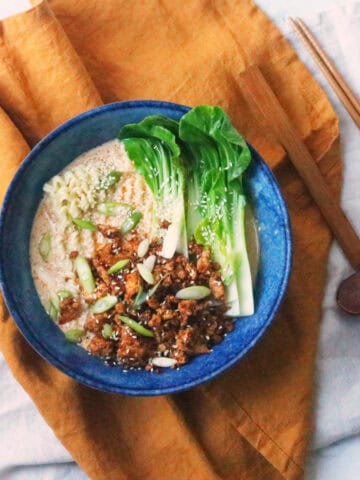
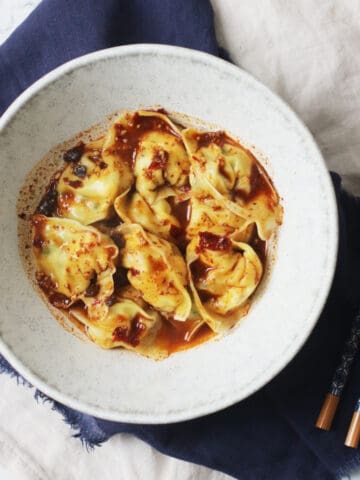

Leave a Reply